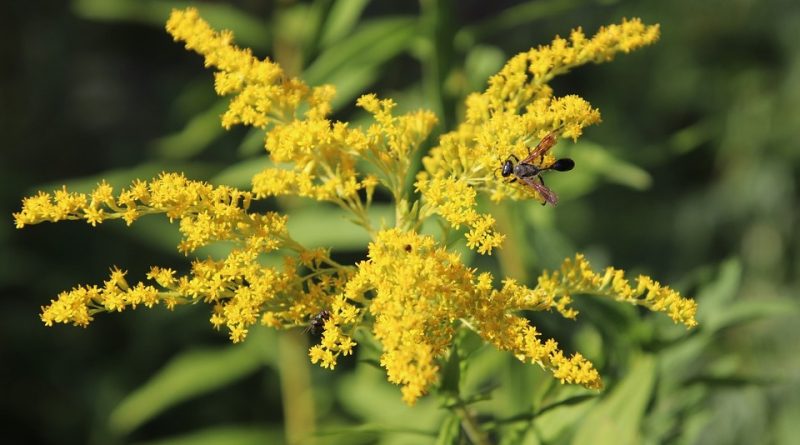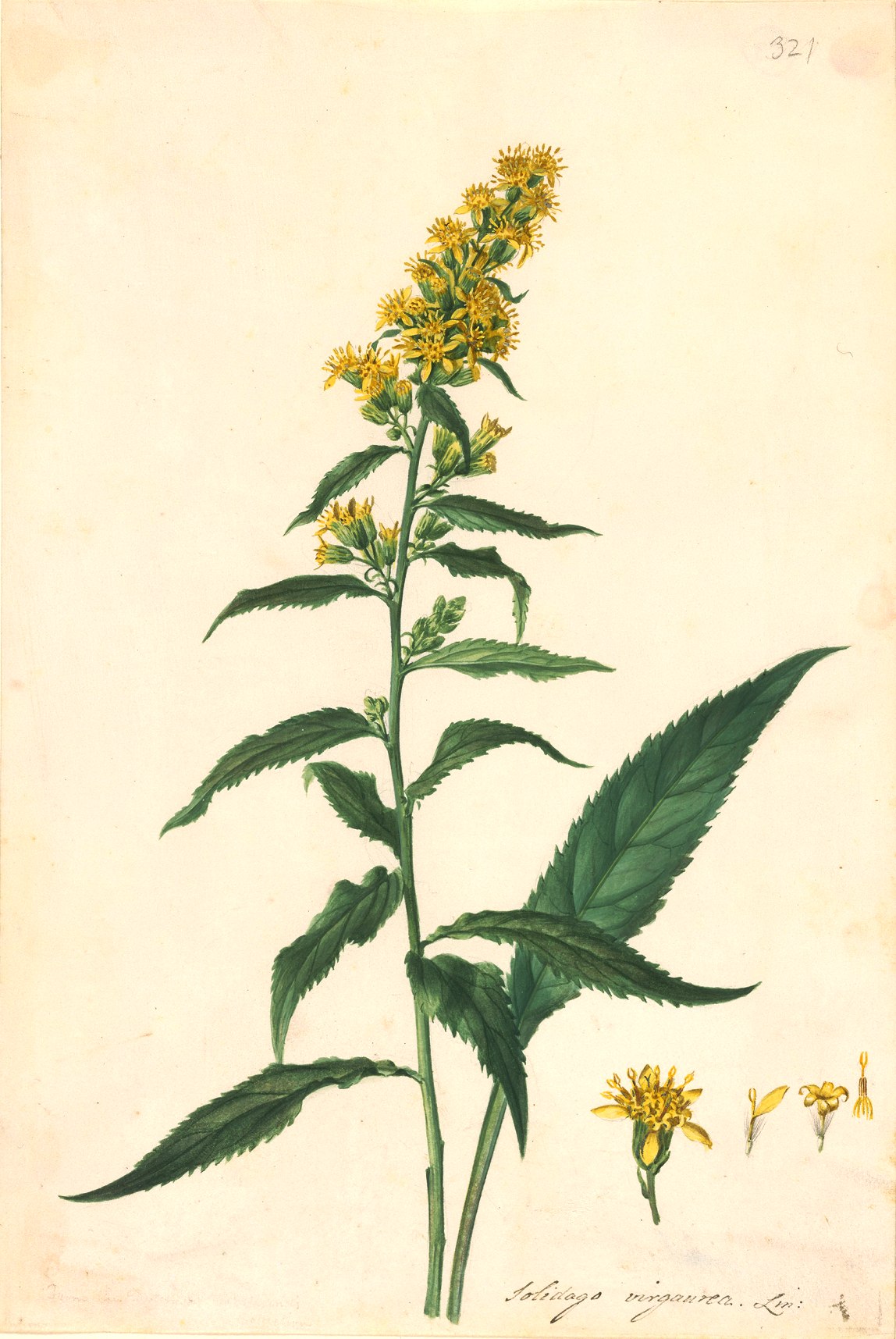Solidago virgaurea
Solidago virgaurea
The European goldenrod or woundwort (Solidago virgaurea L., 1753) is a herbaceous species belonging to the Asteraceae family.
Systematic –
From a systematic point of view it belongs to the Eukaryota Domain, Kingdom Plantae, Superdivision Spermatophyta, Division Magnoliophyta, Class Magnoliopsida, Subclass Asteridae, Order Asterales, Family Asteraceae, Subfamily Asteroideae, Tribe Astereae, Subtribu Solidagininae and therefore to the Genus Solidagourea and the Species S. .
In Italy there are subspecies:
– Solidago virgaurea subsp. litoralis (Savi) Briq. & Cavill .;
– Solidago virgaurea subsp. minuta (L.) Arcang .;
– Solidago virgaurea L. subsp. Virgaurea.
Etymology –
The term Solidago comes from solid welding, firming, reinforcing: an allusion to its recognized healing properties.
The specific epithet virgaurea comes from virga aurea verga doro: for golden flower heads.
Geographical Distribution and Habitat –
Solidago virgaurea is a species in the temperate-cold areas of Europe, Asia and North America. Its diffusion in Italy is in all regions except in Sicily. Its habitat is that of rather fresh woods and at their edges and clearings, on fresh clayey soils, poor in carbonates, from neutral to subacids, from sea level to the subalpine belt.
Description –
The European goldenrod is a perennial herbaceous species with an erect stem that can grow up to 80 cm.
The basal leaves are lanceolate and with a notched margin while those of the stem are sessile and gradually become smaller towards the top of the plant.
The inflorescence is formed by numerous racemes, placed in the axil of the leaves, each of which is made up of some yellow flower heads; the flower heads are made up of ligulated flowers arranged externally in a single circumference and tubular flowers arranged in the center.
The flowering period runs from July to October.
The fruit is an achene which has a more or less cylindrical shape, with the ends thinned and equipped with a pappus, a structure that facilitates its dispersion through the wind.
The goldenrod is however a plant characterized by extreme variability.
Cultivation –
Solidago virgaurea is a spontaneous herbaceous plant, often present in grassy clearings and stony pastures that grows mainly on fresh clayey soils, poor in carbonates, and with neutral or subacid pH.
However, it can be grown from seed from sea level to the subalpine belt.
It is an easy-to-grow plant and can quickly decorate large areas.
Uses and Traditions –
The European goldenrod is a plant that seems to have diuretic and astringent properties, especially indicated in cases of cystitis and kidney stones.
The official botanical name of this plant, in fact, which derives from the Latin, precisely indicates the act of “consolidating”, with reference to its therapeutic properties and the use that the ancient Romans already made of it.
Furthermore, the bright yellow color reminded the ancients of the most precious metal, gold.
The drug is present in the flowering tops of the plant and contains substances such as triterpene saponins, flavonoids, inulin, saponin, various resins, essential oils, tannins and mucilages.
Thanks to its draining action, moreover, it is advisable to contrast the water retention and the imperfections of cellulite, associating it with a diet rich in liquids and foods of vegetable origin.
Furthermore, due to its characteristics it would allow our body to burn fats and calories more quickly, cleaning the lymphatic system and therefore it is considered as a “friend of the line” plant.
It is also used to combat diarrhea and in the treatment of enteritis.
There are no known contraindications and particular side effects if normal therapeutic doses are taken, subject to the hypothesis of individual hypersensitivity.
However, for those suffering from particular pathologies, intake is prohibited, especially for people with heart problems, allergy sufferers or pregnant women.
Basic dyeing principles for the yellow color can be extracted from the entire plant.
Solidago virgaurea is, moreover, a plant very visited by bees that collect abundant nectar and represents a very important resource for these insects, as it blooms in summer, when bees do not have many blooms available from which to produce stocks for the wintering.
Preparation method –
To take advantage of the healing properties of this seedling, infusions can be prepared. In this case, it is necessary to pour 3 grams of dried plant in 100 grams of boiling water and wait for about a quarter of an hour. You can take two or three cups a day.
Guido Bissanti
Sources
– Acta Plantarum – Flora of the Italian Regions.
– Wikipedia, the free encyclopedia.
– Treben M., 2000. Health from the Lord’s Pharmacy, Tips and experiences with medicinal herbs, Ennsthaler Editore
– Pignatti S., 1982. Flora of Italy, Edagricole, Bologna.
– Conti F., Abbate G., Alessandrini A., Blasi C. (edited by), 2005. An annotated checklist of the Italian vascular flora, Palombi Editore.
Warning: Pharmaceutical applications and alimurgical uses are indicated for information purposes only, they do not in any way represent a medical prescription; therefore, no responsibility is accepted for their use for healing, aesthetic or food purposes.


